The chest supported dumbbell row is a very effective exercise for back that primarily targets the muscles of the upper back, including the rhomboids, middle trapezius, and rear deltoids. It also engages the biceps and helps to improve your posture. If you wish to have a strong and muscular upper back and anterior deltoids then it is an exercise you should not miss. However, lack of proper form can’t provide you best results rather you may suffer various injuries. That’s why, here we have explained the step-by-step guide on how to perform chest supported dumbbell row in a proper form. In addition, in-depth benefits and variation of this amazing exercise is also discussed in this same article. Let’s get started.
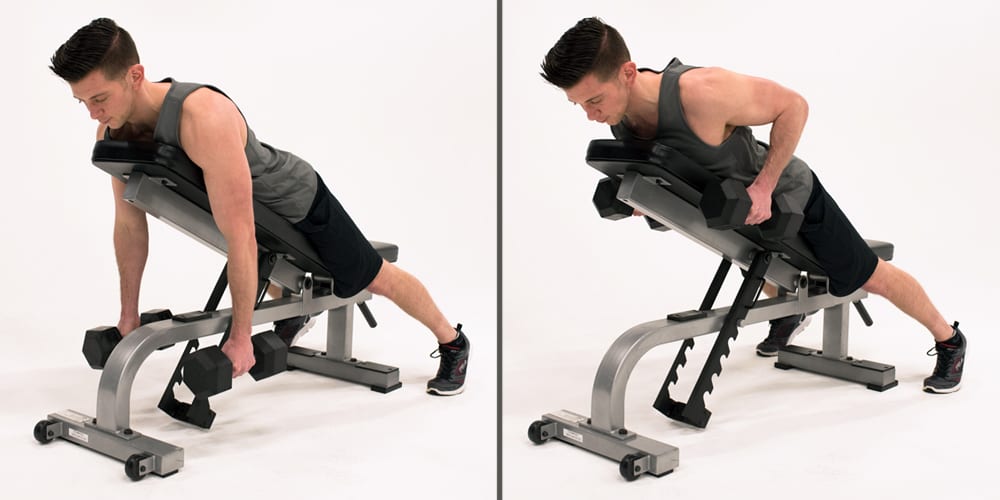
Don’t Miss: 10 Best Exercises for Back (Hit Every Muscle!)
How to Perform Chest Supported Dumbbell Row?!
Here’s a step-by-step guide on how to perform the chest supported dumbbell row safely with a proper form to get the maximum benefits for your upper back without any unnecessary injury.
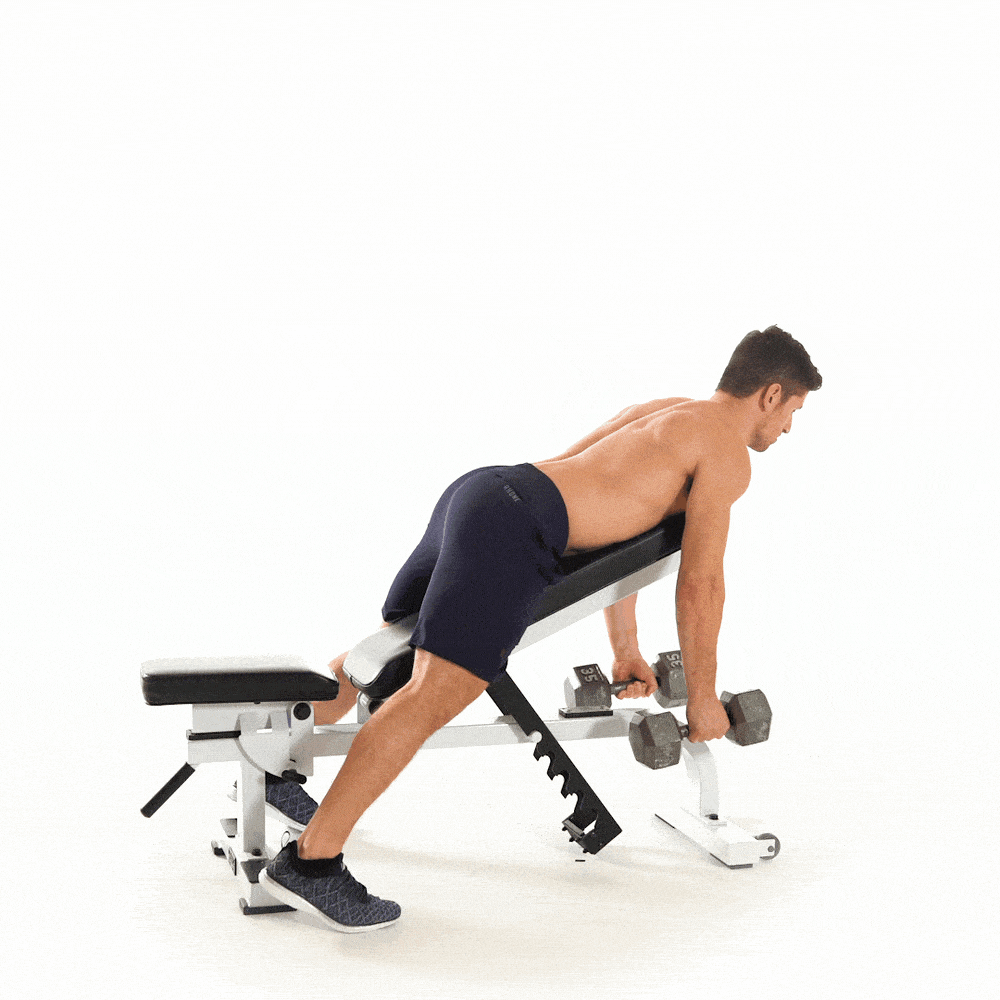
Set Up
Place an incline bench at a 45-degree angle and you need a pair of dumbbells which should be placed on the floor at the head of the bench. Adjust the bench height to ensure your chest can comfortably rest against it while maintaining a neutral spine.
Position Yourself
Stand facing the bench and place one knee on the bench, positioning it near the edge. Keep your other foot on the ground, slightly behind you for stability. Brace your core while maintaining a flat back.
Grasp the Dumbbells
Reach down and pick up the dumbbells, one in each hand, using a neutral grip (palms facing each other). Keep your arms extended fully downward with a slight bend in your elbows.
Initiate the Movement
Exhale and retract your shoulder blades as you pull the dumbbells up towards your chest. Activate your back muscles by focusing on engaging them and squeezing your shoulder blades together. Keep your elbows close to your body throughout the movement.
Peak Contraction
When the dumbbells reach your chest, squeeze your back muscles and hold for a brief moment. Feel the pump and tension in your upper back by creating mind-muscle connection.
Lowering Phase
Inhale and slowly lower the dumbbells back to the starting position, fully extending your arms downward. Maintain control throughout the eccentric (lowering) phase of the movement.
Repeat
Perform 8 to 12 repetitions while maintaining proper form, stability and control.
It’s crucial to perform the exercise with proper form and gradually increase the weight as you become habituated with the form and become stronger. Start with lighter weights and focus on perfecting your technique before progressing to heavier loads.
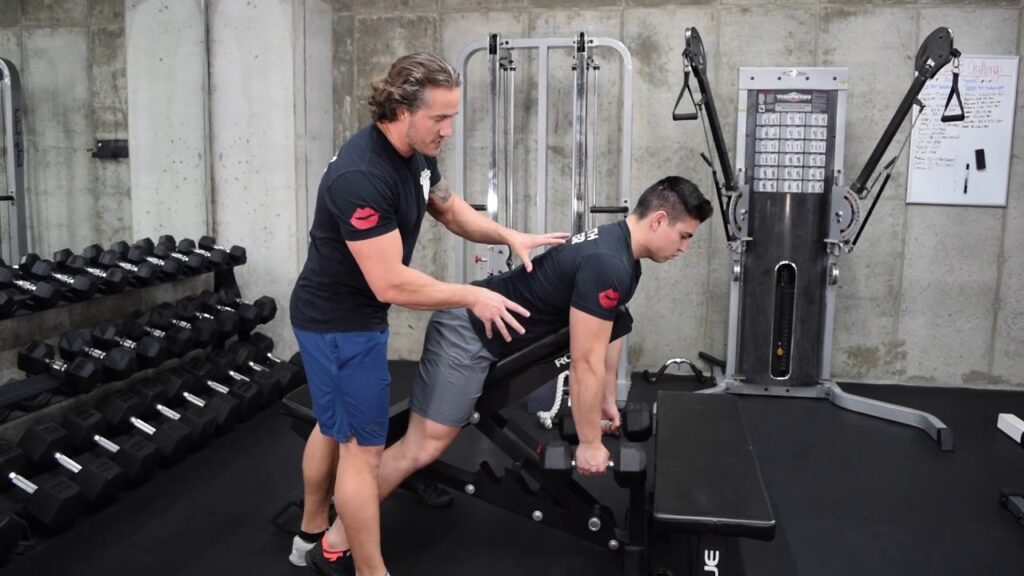
As with any exercise, it’s recommended to consult a fitness professional or trainer if you’re unsure about the proper execution or have any specific concerns or limitations. They can provide personalized guidance and help tailor the exercise to your individual needs and goals.
Important Tips!
– Keep your chest pressed against the bench throughout the exercise to maintain stability and isolate the targeted muscles.
– Avoid excessive momentum or jerking motions. Focus on smooth, controlled movements.
– Keep your neck aligned with your spine, looking slightly forward or downward.
– Adjust the weight of the dumbbells according to your strength and ability. Start with lighter weights and gradually increase as you become more comfortable with the movement.
– Incorporate a brief pause at the top of the movement to maximize the engagement of the back muscles.
Benefits of Chest Supported Dumbbell Row
As we already said, chest supported dumbbell row is a highly beneficial exercise that targets the muscles of the upper back like the rhomboids, middle trapezius, and rear deltoids. Let’s explore the detailed benefits of incorporating the chest supported dumbbell row into your workout routine.
Upper Back Strength
The primary benefit of the chest supported dumbbell row is the development of upper back strength. By targeting the rhomboids, middle trapezius, and rear deltoids, this exercise helps to build muscle mass and increase strength in the upper back region. Strengthening these muscles can improve posture, stability, and overall upper body strength.
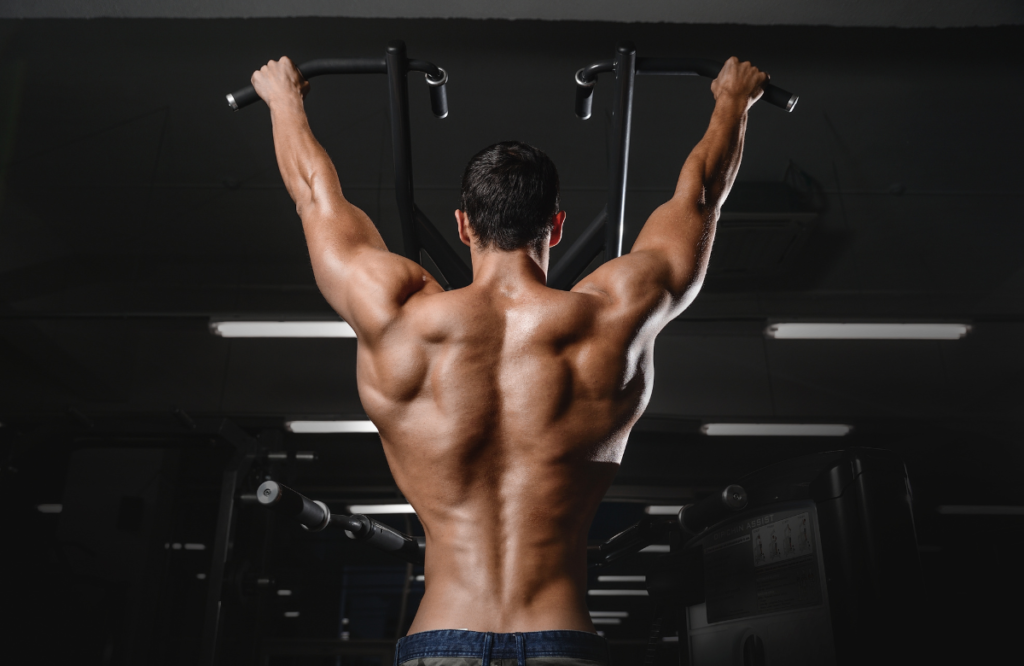
Posture Improvement
Many people struggle with rounded shoulders and poor posture due to prolonged sitting, slouching, or weak upper back muscles. The chest supported dumbbell row helps counteract these issues by strengthening the muscles responsible for retracting and stabilizing the shoulder blades. With regular practice, this exercise can assist in improving posture and reducing the likelihood of postural imbalances.

Balanced Upper Body Development
The chest supported dumbbell row is an excellent exercise for creating balanced upper body development. It targets the muscles of the upper back, which are often neglected compared to the chest and anterior shoulder muscles. By incorporating this exercise into your routine, you can ensure that your upper body develops strength and muscle symmetry, leading to a well-rounded physique.
Injury Prevention
Weak upper back muscles can contribute to an increased risk of shoulder and neck injuries. By strengthening the muscles involved in scapular retraction and shoulder stabilization, the chest supported dumbbell row helps improve joint stability and reduce the likelihood of injuries. Strong upper back muscles also support proper form during other exercises, such as bench presses or overhead presses.

Increased Functional Strength
The chest supported dumbbell row is a compound exercise that engages multiple muscle groups simultaneously. It not only targets the upper back but also recruits the biceps, rear deltoids, and even the core for stabilization. This exercise translates to improved functional strength, which can enhance performance in various activities and sports.
Also Read: 5 Best Lower Lats Exercises: A Comprehensive Guide For Defined Back”

Versatility & Convenience
The chest supported dumbbell row can be performed with a simple incline bench and a pair of dumbbells, making it a versatile and convenient exercise option. It can be done in any gym or home setup with minimal equipment requirements.
Variations of Chest Supported Dumbbell Row
Here are some variations of the chest supported dumbbell row exercise that you can consider adding in your workout routine to target different areas of the upper back and add variety to your training.
Pronated Grip Chest Supported Dumbbell Row
Instead of using a neutral grip (palms facing each other), use a pronated grip (palms facing down) when performing the row. This variation emphasizes the engagement of the middle trapezius and posterior deltoids.
Supinated Grip Chest Supported Dumbbell Row
Use a supinated grip (palms facing up) for the row. This grip variation places more emphasis on the teres major and lats. It also puts great tension on your biceps. So, using both pronated and supinated grip, you can target almost all the muscles of your upper back!
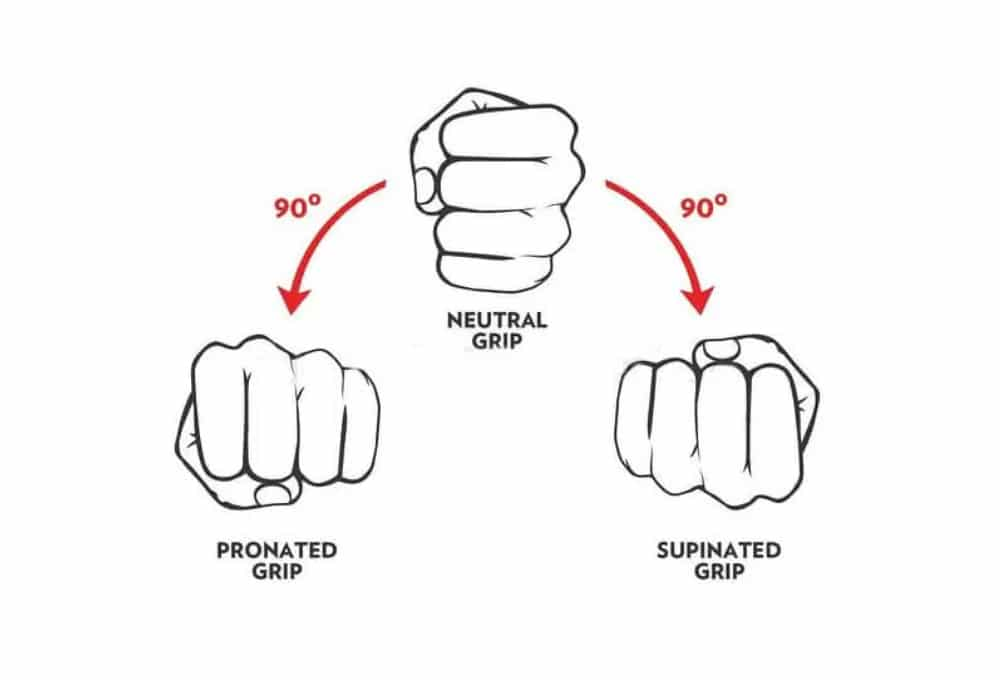
Single-Arm Chest Supported Dumbbell Row
Perform the exercise with one arm at a time. This variation allows you to focus on each side independently and provides a greater challenge to your core stability while targeting your lats more just like standard dumbbell row does.
Alternating Chest supported Dumbbell Row
Similar to the single-arm variation, but alternate between rows on each side. This variation adds a dynamic element to the exercise and challenges your coordination and stability. Yet, it is not as effective as the single-arm variation. But you can obviously try it if you want to experience more challenge and dynamic element.
Wide Grip Chest Supported Dumbbell Row
Widen your grip on the dumbbells, placing your hands further apart than shoulder-width. This variation targets the outer portion of the back, emphasizing the engagement of the rear deltoids, the outer part of the rhomboids and teres major muscles.
Narrow Grip Chest Supported Dumbbell Row
Bring your hands closer together, positioning them inside shoulder-width. This variation places more emphasis on the inner portion of the back, targeting the inner rhomboids, middle trapezius and lower back muscles.
Prone Chest Supported Dumbbell Row
Instead of using an incline bench, lie facedown on an adjustable bench set to a slight incline. Hold the dumbbells with an overhand grip and row them up towards your chest. This variation increases the range of motion and targets the upper back muscles from a different angle. If you ever hit a workout plateau then using variations like this can help you overcome that because it is the same exercise done with a different angle.
Also Read: Workout Plateau: 5 Proven Methods To Overcome it!
Pause or Squeeze at the Top Variation
Perform a brief pause at the top of each repetition. When the dumbbell reaches your chest, squeeze your shoulder blades together and hold for a second or two to intensify the contraction and increase time under tension. This variation will bring greater muscle mass in your upper back because of more time under tension that creates better hypertrophy.
Tempo Variation
Vary the speed at which you perform the exercise. For example, you can emphasize the eccentric (lowering) phase by taking more time to lower the dumbbell back to the starting position. This adds an extra challenge to the muscles and increases time under tension quite similar to pause or squeeze technique.
Including these variations can help you target specific areas of the upper back, challenge different muscle fibers, and prevent workout plateau. Remember to choose the variations that align with your fitness goals and maintain proper form and control throughout each repetition. Hopefully, we have successfully helped you with our article about proper technique, benefits and variations of chest supported dumbbell row. If it is really so then don’t hesitate to express your valuable thoughts in the comment section. Thanks for visiting and appreciating our work.
